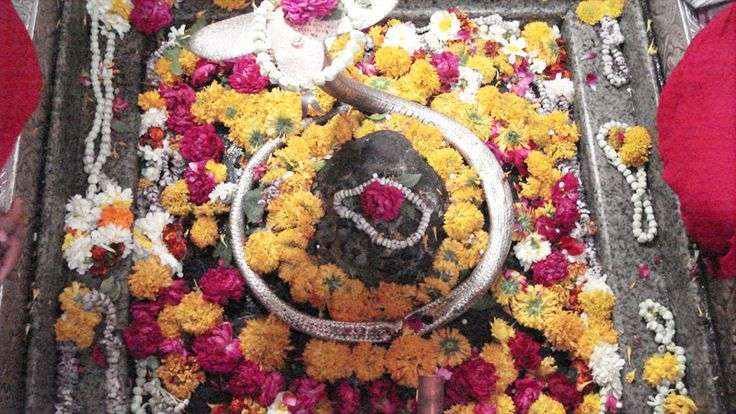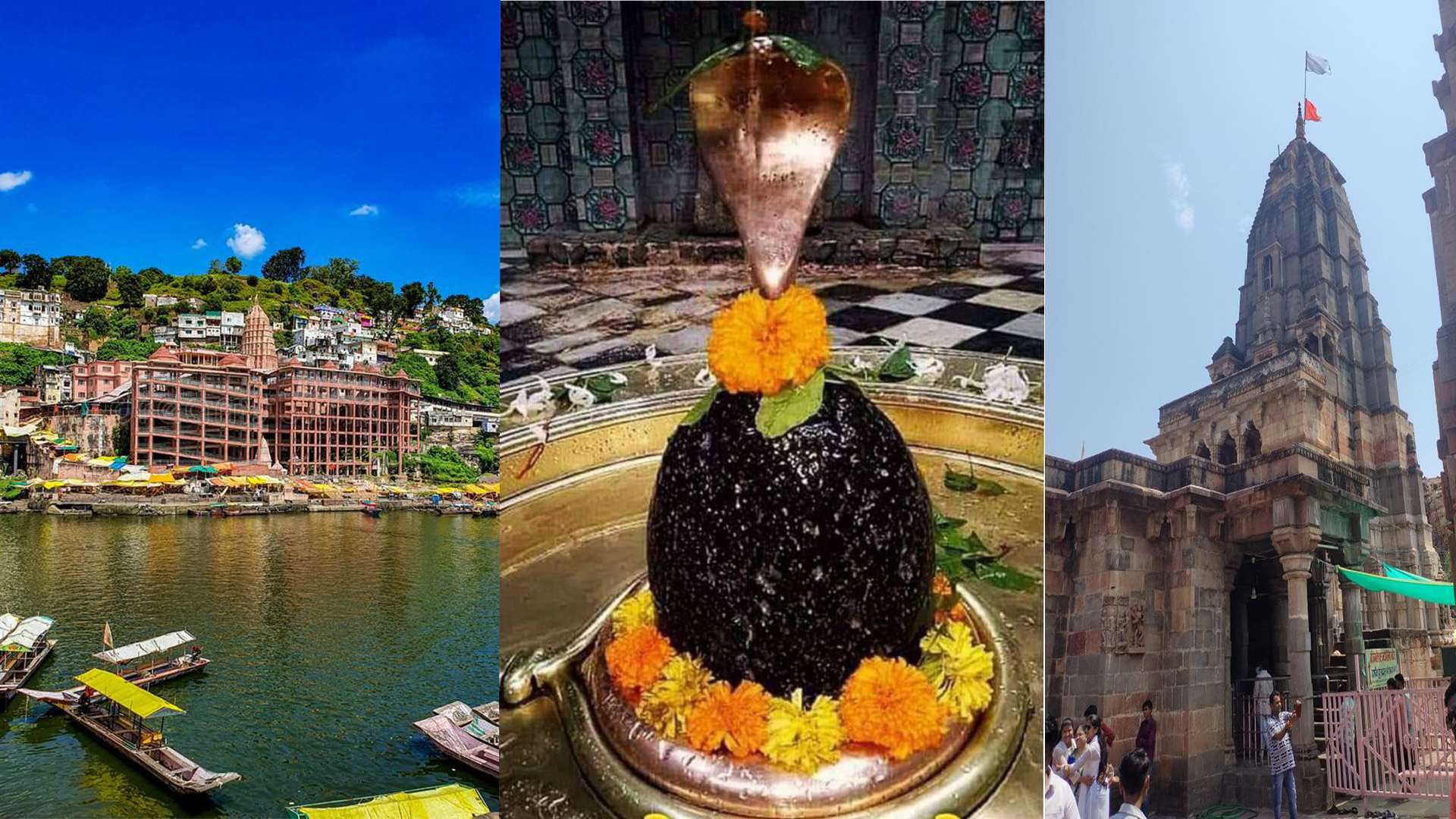Omkareshwar Jyotirlinga
Nestled on an island shaped like the sacred symbol “Om” in the Narmada River, the Omkareshwar Jyotirlinga holds a special place in the hearts of devotees and pilgrims. Located in the Khandwa district of Madhya Pradesh, Omkareshwar is one of the twelve revered Jyotirlingas, representing Lord Shiva in his radiant form. This sacred shrine is not only a significant spiritual destination but also a symbol of natural beauty and tranquility.
Omkareshwar Jyotirlinga-Historical Significance
Omkareshwar Jyotirlinga, one of the twelve sacred Jyotirlingas of Lord Shiva, is nestled on an island called Mandhata (also known as Shivapuri) in the Narmada River in Madhya Pradesh, India. The island itself is shaped like the Hindu symbol “Om,” making it a place of deep spiritual significance.
Omkareshwar Jyotirlinga-Ancient Origins and Legends
The origins of Omkareshwar Jyotirlinga are steeped in ancient mythology. According to legend, King Mandhata of the Ikshvaku dynasty, a devout worshiper of Lord Shiva, performed rigorous penance here to seek blessings for his kingdom. His devotion pleased Lord Shiva, who appeared as a Jyotirlinga to bless the king and his descendants. This is how the place got its name, “Omkareshwar,” meaning “Lord of Omkara.”
Another legend tells of the Vindhya mountain’s penance. The Vindhya mountain, troubled by the rising dominance of Mount Meru, undertook severe austerities to please Lord Shiva. Pleased with the mountain’s devotion, Shiva manifested as Omkareshwar and Amareshwar Jyotirlinga. As a result, the Vindhya mountain gained the strength to grow taller. This story highlights the divine power of Lord Shiva and the significance of the Jyotirlinga in balancing cosmic energies.
Historical Significance
Omkareshwar has been a major center of Shaivism since ancient times. The temple’s history is intertwined with the religious and cultural history of India. It is believed that Adi Shankaracharya, the 8th-century philosopher and theologian, visited Omkareshwar to debate with the scholars of the area. It was here that he was inspired to write his famous work, the “Shankar Bhashya,” a commentary on the Brahma Sutras.
Over the centuries, various dynasties, including the Paramaras, Holkars, and the Marathas, contributed to the temple’s development and patronage. The temple’s architecture is a blend of Nagara and Dravidian styles, with intricate carvings and a serene ambiance that reflects its spiritual importance.
The Temple Today-Omkareshwar Jyotirlinga
Today, Omkareshwar Jyotirlinga is not just a religious site but also a symbol of India’s rich cultural heritage. Pilgrims from all over the country visit the temple to seek blessings and to experience the divine energy that the site is believed to radiate. The temple complex is surrounded by the lush green hills of the Vindhyachal range, adding to its tranquil and picturesque setting.
The temple is accessible by a boat ride across the Narmada River, further adding to the experience of pilgrimage. The island is also home to several other temples and ashrams, making it a vibrant hub of spiritual activity.
Architectural Marvel
Nestled on the serene island of Mandhata in the Narmada River, Madhya Pradesh, Omkareshwar Jyotirlinga stands as a testament to India’s rich spiritual and architectural heritage. Revered as one of the twelve sacred Jyotirlingas of Lord Shiva, this temple is not only a center of profound devotion but also an exemplary display of ancient Indian architecture. The temple’s unique design, intricate carvings, and spiritual ambiance make it a marvel that attracts pilgrims and architecture enthusiasts alike.
The Om-Shaped Island: A Natural Wonder
The first striking feature of Omkareshwar is its location on an island shaped like the sacred Hindu symbol “Om.” This natural formation itself is considered a divine miracle and adds a layer of spiritual significance to the temple. The island’s shape is not only a geographical wonder but also deeply symbolic, representing the essence of the universe in Hindu philosophy. The “Om” symbol, composed of three curves, a semicircle, and a dot, is believed to embody the cosmic sound and the ultimate reality. The very foundation of the temple on such a site intertwines natural beauty with spiritual and architectural ingenuity.
Architectural Style: A Blend of North and South
Omkareshwar Jyotirlinga showcases a harmonious blend of Nagara (North Indian) and Dravidian (South Indian) architectural styles, reflecting the cultural synthesis that has occurred over centuries. The temple complex, with its towering spires and intricate carvings, exhibits the grandeur of ancient Indian temple architecture.
Nagara Style Influence: The temple’s shikhara (spire) follows the Nagara style, characterized by its curvilinear design. The shikhara rises majestically above the sanctum, symbolizing the ascent of the devotee’s soul towards the divine. The intricate detailing on the spire is reminiscent of the ornate carvings found in other Nagara-style temples across northern India.
Dravidian Style Influence: The influence of Dravidian architecture is evident in the temple’s gopurams (gateway towers) and the mandapas (pillared halls). The temple’s prakara (enclosure wall) and vimana (tower above the sanctum) also bear similarities to Dravidian temple structures, showcasing the cross-cultural architectural exchange that enriched the temple’s design.
Intricate Carvings and Sculptures
One of the most mesmerizing aspects of Omkareshwar Jyotirlinga is the detailed carvings and sculptures that adorn its walls, pillars, and ceilings. These carvings depict scenes from Hindu mythology, including tales of Lord Shiva, the various avatars of Vishnu, and episodes from the Mahabharata and Ramayana. The precision and artistry of these carvings reflect the high level of craftsmanship achieved by ancient Indian sculptors.
The temple’s sanctum houses the Jyotirlinga, which is intricately decorated with floral motifs and sacred symbols. The inner walls of the temple are adorned with delicate carvings of deities, celestial beings, and intricate geometric patterns, creating an aura of divinity and serenity.
The Nandi Mandapa: A Symbol of Devotion
The Nandi Mandapa, situated in front of the main temple, is another architectural highlight. Dedicated to Nandi, the sacred bull and vehicle of Lord Shiva, this mandapa is an open pavilion supported by intricately carved pillars. The sculpture of Nandi, facing the Jyotirlinga, is a magnificent work of art, symbolizing unwavering devotion and loyalty to Lord Shiva. The mandapa’s design, with its open structure and detailed carvings, exemplifies the architectural brilliance of the period.
The Grand Entrance: A Journey of Spiritual Ascent
The temple’s entrance is designed to evoke a sense of reverence and awe in the devotee. The approach to the temple involves a gradual ascent, symbolizing the spiritual journey one undertakes to reach the divine. The pathway is flanked by smaller shrines and pillars, each adorned with carvings that tell stories from Hindu scriptures. The temple’s entrance gateway, or gopuram, is a towering structure that serves as a grand threshold between the mundane world and the sacred space of the temple.
The Mandhata Palace and Other Structures
The Mandhata Palace, located near the temple, is another architectural gem that adds to the historical and cultural significance of Omkareshwar. Built by the Holkar dynasty, the palace offers panoramic views of the temple, the Narmada River, and the surrounding landscape. The palace’s architecture, with its courtyards, balconies, and intricately decorated interiors, reflects the regal splendor of the era.
The temple complex also includes several other shrines and structures, each contributing to the overall architectural grandeur of Omkareshwar. The complex is a confluence of different architectural styles and religious influences, creating a unique and spiritually enriching environment.

Spiritual Practices and Festivals
Omkareshwar is a hub of spiritual activities, especially during significant Hindu festivals. The temple witnesses a massive influx of devotees during Mahashivratri, Kartik Poornima, and the month of Sawan (Shravan). These periods are marked by special rituals, night-long vigils, and vibrant processions, immersing the devotees in an atmosphere of devotion and celebration.
Pilgrims undertake a sacred parikrama (circumambulation) of the Omkareshwar island, believed to bestow immense spiritual merit. The path is dotted with smaller shrines, scenic spots, and the enchanting view of the Narmada River, enriching the spiritual journey
Omkareshwar: A Confluence of Faith and Nature
The unique confluence of faith and nature makes Omkareshwar a compelling destination. The island, with its lush greenery and the serene flow of the Narmada, offers a peaceful retreat for meditation and reflection. The panoramic views from the island, especially during sunrise and sunset, provide moments of awe and spiritual introspection.
The confluence of the Kaveri River with the Narmada near Omkareshwar further adds to the island’s mystique and sanctity. The spot, known as the Sangam, is considered highly auspicious and is a popular site for rituals and prayers.
How to Reach Omkareshwar
Omkareshwar is well-connected by road and rail, making it accessible for pilgrims and tourists. The nearest major city is Indore, approximately 80 kilometers away, which has an airport and a railway station. From Indore, regular buses, taxis, and private vehicles can take you to Omkareshwar. The journey through the picturesque landscape of Madhya Pradesh adds to the spiritual charm of the trip.
Omkareshwar Jyotirlinga is more than just a pilgrimage site; it is a sanctuary of peace, devotion, and natural beauty. Whether you are seeking spiritual solace, historical insights, or simply a tranquil escape, Omkareshwar offers a profound experience that resonates with the divine energy of Lord Shiva. A visit to this sacred island is a journey into the heart of India’s spiritual heritage, leaving you with a sense of inner peace and divine connection.

